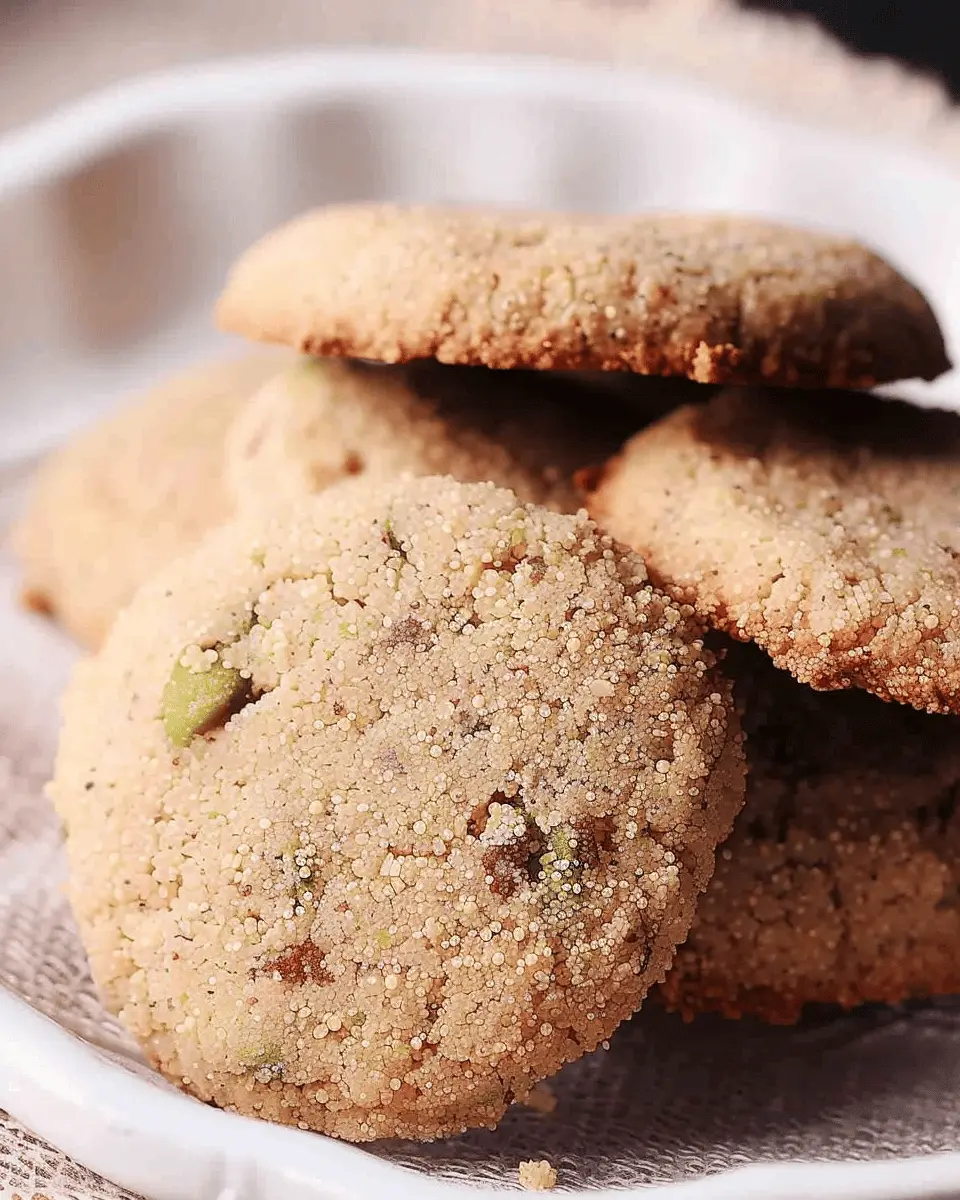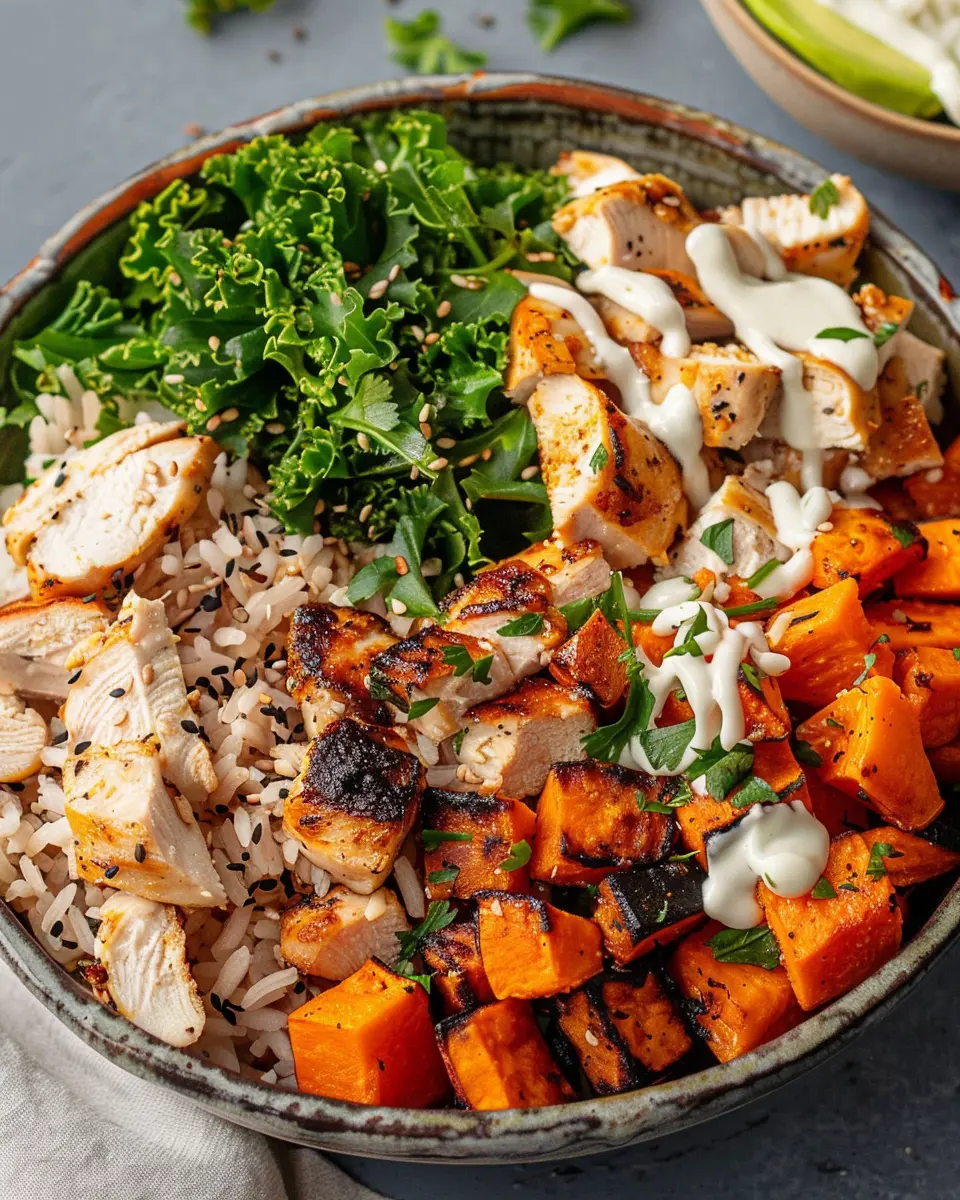Introduction to Gluten-Free Amaranth Cookies
Why Go Gluten-Free?
Going gluten-free can feel like navigating a new world, especially if you’ve just discovered you have a sensitivity or intolerance to gluten. For many, the switch to gluten-free eating can lead to improved digestion, increased energy levels, and a reduction in inflammation. Studies have shown that a gluten-free diet can benefit individuals with celiac disease, non-celiac gluten sensitivity, or those simply looking to improve their overall health (source: Mayo Clinic). Have you considered how cutting gluten from your meals might feel? It’s a journey that many find worth embarking on!
Moreover, a gluten-free lifestyle doesn’t mean sacrificing flavor or fun in your baking. Enter gluten-free amaranth cookies! These delightful treats blend texture, taste, and health benefits, making them an excellent choice for all eaters, not just those on a gluten-free diet.
Benefits of Amaranth
If you’re looking for an alternative to traditional flour, amaranth is your go-to. This ancient grain is known for its nutrition-packed components. Rich in protein, fiber, and a variety of vitamins and minerals, especially magnesium and iron, amaranth brings a powerhouse of health benefits to your cookies. Adding gluten-free amaranth to your recipes can help in promoting heart health and improving digestion.
Here’s a quick look at why amaranth deserves a spot in your pantry:
- High Protein Content: Amaranth contains all nine essential amino acids, which is rare for plant-based sources, making it great for vegetarians and vegans.
- Essential Nutrients: It’s a fantastic source of phytonutrients and antioxidants which contribute to overall health.
- Gluten-Free Benefits: Being naturally gluten-free, it’s an excellent choice for those avoiding gluten while still needing quality carbs.
Have you ever thought about how such a small shift in your ingredient choices could lead to substantial health benefits? By incorporating gluten-free amaranth into your baking repertoire, you’ll be doing just that—making a simple yet impactful change to your meals. Get ready to enjoy delicious cookies that not only satisfy your sweet tooth but also fuel your body with goodness!
Whether you’re preparing for a gathering, treating yourself, or simply curious, making gluten-free amaranth cookies can be a fun and rewarding experience.

Ingredients for Gluten-Free Amaranth Cookies
Essential Ingredients Breakdown
Creating delicious gluten-free amaranth cookies starts with gathering the right ingredients. Here’s your go-to list:
- Amaranth Flour: The star of the show! Packed with protein and fiber, it lends a unique texture while being naturally gluten-free.
- Almond Butter: Adds moisture and richness; a great alternative to traditional butter.
- Maple Syrup: Serve as a natural sweetener with a lovely depth of flavor.
- Eggs: These act as binders, helping the cookies hold their shape.
- Baking Soda: Provides that essential lift, ensuring your cookies are nice and fluffy.
- Vanilla Extract: A splash of this adds a warm, aromatic finish to your cookies.
Alternatives to Consider
If you’re out of something or just want to switch it up, consider these alternatives:
- Peanut Butter or Sunflower Seed Butter: For a nut-free option, sunflower seed butter works wonderfully.
- Coconut Sugar: This can replace maple syrup for a lower glycemic index sweetener.
- Chia Seeds: If you want a vegan option, these can substitute for eggs when mixed with water.
For more insights on gluten-free baking, check out resources from Gluten-Free Living and The Gluten-Free Girl. Happy baking!
Step-by-Step Preparation of Gluten-Free Amaranth Cookies
Making gluten-free cookies can be a fun and rewarding experience, especially when using the nutritious grain, amaranth. These cookies are not just a guilt-free treat but also a great way to incorporate healthy ingredients into your diet. Let’s dive in!
Gather and Prep Your Ingredients
Before anything else, it’s essential to have all your ingredients ready. Here’s what you’ll need:
- 1 cup amaranth flour (you can easily make this at home—more on that later)
- ½ cup almond flour
- ¼ cup coconut sugar or any preferred sweetener
- 1 teaspoon ground cardamom
- ½ teaspoon baking soda
- ¼ teaspoon salt
- ½ cup coconut oil (melted) or butter
- 1 teaspoon vanilla extract
- 1 large egg (or a flax egg for a vegan option)
You can find many of these ingredients at your local grocery store or health food shops. If you haven’t tried coconut sugar, it’s a fantastic natural sweetener that gives a lovely caramel flavor.
Make Amaranth Flour
If you’re looking to keep it entirely DIY, making your own amaranth flour is incredibly simple! Just take whole amaranth grains and use a high-speed blender or a spice grinder. Blend them until they reach a fine powdery consistency. This fresh flour packs a nutritional punch and will taste better than any store-bought version.
Prepare Almond and Cardamom Mixture
In a separate bowl, combine the almond flour, ground cardamom, baking soda, and salt. Mixing these dry ingredients first ensures that the leavening agent is evenly distributed throughout the cookie dough. Did you know that cardamom not only adds flavor but also comes with antioxidant properties? It’s a win-win!
Create the Cookie Dough
Now, it’s time to bring it all together! In a mixing bowl, whisk your melted coconut oil and coconut sugar until well blended. Then, add in the egg (or flax egg) and vanilla extract, mixing until combined.
Gradually add in your dry almond and cardamom mixture from the previous step, and slowly incorporate the amaranth flour. You’ll find it creates a slightly sticky dough; that’s perfectly okay! If you find it too sticky, just add a bit more amaranth flour until it’s manageable.
Shape and Chill the Cookies
Using your hands or a cookie scoop, form dough balls and place them on a baking sheet lined with parchment paper. For a nice, classic look, gently flatten each ball. Here’s a pro tip: chilling the cookie dough in the refrigerator for about 30 minutes helps intensify the flavors and leads to a chewier texture.
Bake the Cookies
Preheat your oven to 350°F (175°C). Once your dough is chilled, place the cookies in the oven and bake for about 10-12 minutes. You want the edges to be lightly golden while the centers remain a tad soft. When you take them out, let them cool on the baking sheet for a couple of minutes before transferring to a wire rack.
You’ll be amazed by the divine aroma that fills your kitchen—these gluten-free amaranth cookies are sure to be a hit!
Now that you have a delicious and easy recipe up your sleeve, why not experiment with add-ins like nuts or dairy-free chocolate chips? The beauty of these cookies is their versatility. Plus, they’re perfect for meal prep or a quick healthy snack throughout the week.
For more tips on gluten-free baking, you can check out resources from The Gluten-Free Baking Guide or explore the benefits of amaranth on Healthline to deepen your understanding of this nutritious grain. Happy baking!

Variations on Gluten-Free Amaranth Cookies
Amaranth is a fantastic gluten-free grain that not only packs a nutritional punch but also lends itself to a variety of delicious cookie variations. Here’s how you can switch things up in your gluten-free amaranth cookie baking adventures.
Chocolate Chip Amaranth Cookies
Who doesn’t love a classic chocolate chip cookie? With amaranth flour, you can create a delightful version that’s both chewy and rich. Start with the base recipe and fold in a generous cup of semi-sweet or dark chocolate chips. For a touch of sophistication, consider using chips infused with sea salt or espresso.
- Tips:
- Replace some of the sugar with coconut sugar for a caramel-like depth.
- Add a teaspoon of vanilla extract for enhanced flavor.
These cookies are perfect for a cozy night in or as an energy-boosting snack on the go. They pair wonderfully with a warm cup of almond milk or your favorite herbal tea, making for a delightful afternoon treat.
Nut-Filled Amaranth Cookies
If you’re looking for something a bit heartier, why not try nut-filled amaranth cookies? These are fantastic for those who enjoy a nutty crunch and added nutrition. Simply incorporate 1/2 cup of chopped walnuts, pecans, or almonds into your cookie dough.
- Suggestions:
- Toast the nuts lightly to enhance their flavor.
- Mix in some dried fruits, like cranberries or raisins, for a delightful contrast.
The result is a cookie that’s not only satisfying but also provides a wholesome boost to your day. They’re a great option for lunchboxes or healthy snacks, proving that gluten-free amaranth can be deliciously versatile.
Explore more gluten-free baking ideas and tips at Celiac Disease Foundation or Gluten-Free Goddess for inspiration!
Cooking Tips and Notes for Gluten-Free Amaranth Cookies
Tips for Perfect Texture
When crafting your gluten-free amaranth cookies, achieving the ideal texture is key. Here are some tips to help you get there:
- Combine Flours Wisely: Amaranth flour can be dense, so consider blending it with lighter flours like almond or coconut to create a balanced texture.
- Use Binding Agents: Incorporate ingredients like flax eggs or chia seeds to provide moisture and a chewy bite.
- Don’t Overmix: Mix until just combined; overmixing can result in tough cookies.
Common Mistakes to Avoid
- Skipping Measurements: Gluten-free baking often requires precise measurements. Use a kitchen scale for accuracy.
- Underbaking: Gluten-free cookies may look slightly underbaked when done. Allow them to cool on the baking sheet to set properly.
- Ignoring Rest Time: Let your cookie dough rest for at least 30 minutes. This helps the flours hydrate and improves the overall texture.
For more baking tips, check out resources like King Arthur Baking or America’s Test Kitchen for expert advice!

Serving Suggestions for Gluten-Free Amaranth Cookies
When it comes to enjoying your gluten-free amaranth cookies, the right accompaniments can elevate your experience. Here are some delightful serving suggestions that will make your cookies even more appealing.
Pairing with Beverages
Thinking about the perfect drink to enjoy with your gluten-free amaranth cookies? Try a soothing cup of herbal tea or a rich, creamy coffee. The warmth of tea can complement the nutty flavor of amaranth, while coffee provides a bold contrast. If you’re in the mood for something fruity, a fresh smoothie with bananas or berries would also work wonders, bringing a bright, refreshing note to the treat.
Creative Serving Ideas
While eating them straight from the batch is tempting, consider these creative serving ideas:
- Ice Cream Sandwiches: Make a fun dessert by sandwiching your cookies with a scoop of your favorite ice cream.
- S’mores Style: Spread nut butter on one cookie and top it with another for a gooey surprise!
- Cookie Crumble: Crumble your cookies over yogurt or oatmeal for a delightful crunch.
With these ideas, your gluten-free amaranth cookies are sure to shine. Whether it’s a cozy afternoon snack or a sweet end to your dinner, enjoy them creatively! For inspiration, check out additional serving suggestions from The Kitchn or EatingWell.
Time Breakdown for Baking Gluten-Free Amaranth Cookies
Preparation Time
Getting ready to bake your gluten-free amaranth cookies doesn’t take long at all—about 15 to 20 minutes should do the trick. Gather your ingredients, prepare your baking sheet, and mix everything together until smooth. Don’t forget to preheat your oven during this time; it’s a key step for perfectly baked cookies!
Baking Time
Once you’ve prepared your dough, it’s time to scoop and shape those cookies! Bake them in the oven for approximately 10 to 12 minutes. You’ll know they’re done when they’re lightly golden and fragrant—your kitchen will smell like a cozy bakery.
Total Estimated Time
In total, you’re looking at about 25 to 32 minutes from start to finish. That means you’ll be enjoying your delicious gluten-free amaranth cookies in no time! Perfect for an afternoon snack or a sweet treat after dinner, these cookies can quickly become your go-to recipe. If you’d like to dive deeper into the health benefits of amaranth, check out Healthline’s article on gluten-free grains. Happy baking!
Nutritional Facts for Gluten-Free Amaranth Cookies
When it comes to snacking smart, gluten-free amaranth cookies bring a nutritious twist to your dessert game. Let’s break down the nutritional facts to show you just how wholesome they can be.
Caloric Information
In a typical serving of gluten-free amaranth cookies, you’re looking at around 150 calories. Not bad for a treat that satisfies both your sweet cravings and nutritional goals!
Macronutrients Overview
These cookies are not just delicious; they also pack a nutritional punch, including:
- Carbohydrates: About 22 grams per cookie, providing quick energy.
- Protein: Surprisingly, around 4 grams per serving, thanks to the amaranth.
- Fat: Generally low, around 6 grams, primarily from healthier sources.
For more in-depth nutrition insights, check out resources like the USDA FoodData Central and NutritionData to explore how these cookies fit into your overall diet.
As you whip up your batch of cookies, remember that every bite counts towards a balanced lifestyle!
FAQ about Gluten-Free Amaranth Cookies
Can I Use Other Flours?
Absolutely! While gluten-free amaranth flour offers a unique nutty flavor and is rich in protein, you can mix it with other gluten-free flours for varied textures and tastes. Options like almond flour, coconut flour, or even oat flour can complement the amaranth flour beautifully. Just remember that moisture levels may vary, so adjust liquids as needed. For specific guidance on flour combinations, refer to resources like the Gluten-Free Society.
How Do I Store These Cookies?
To maintain their freshness, store your gluten-free amaranth cookies in an airtight container at room temperature for about a week. If you want to keep them longer, try freezing them! Just wrap each cookie tightly in plastic wrap, place them in a freezer-safe bag, and they can last up to three months. When you want to enjoy a cookie, simply let it thaw at room temperature or pop it into a microwave for a few seconds.
Are Amaranth Cookies Suitable for Everyone?
While amaranth is gluten-free and a fantastic option for those with celiac disease or gluten sensitivity, they may not be suitable for everyone. Some individuals might be allergic to amaranth or other ingredients you use. Always check ingredient labels and consult with a healthcare professional if you’re unsure. If you’re considering dietary changes, resources like the Celiac Disease Foundation can provide valuable insights.
Conclusion on Gluten-Free Amaranth Cookies
Recap of Benefits and Encouragement to Try
In summary, gluten-free amaranth cookies are not just a delicious treat; they offer numerous health benefits too. Rich in protein, fiber, and essential nutrients, including magnesium and iron, amaranth is an excellent choice for those looking to enhance their diet without sacrificing flavor.
Why not give these cookies a try? They’re easy to make and are sure to impress friends and family alike. Plus, the unique texture and slightly nutty taste of amaranth will elevate your baking game. So, gather your ingredients, and start baking today! For more insights on gluten-free baking, check out the Gluten Intolerance Group.
Print
Gluten-Free Amaranth: Easy, Delicious Recipes for Every Meal
A collection of easy and delicious gluten-free amaranth recipes perfect for any meal.
- Total Time: 30 minutes
- Yield: 4 servings 1x
Ingredients
- 1 cup gluten-free amaranth
- 2 cups water
- 1 tablespoon olive oil
- 1 teaspoon salt
Instructions
- Rinse the amaranth under cold water.
- In a pot, bring water to a boil.
- Add amaranth, olive oil, and salt to the boiling water.
- Reduce heat to low and cover. Simmer for about 20 minutes.
- Remove from heat and let it sit for 5 minutes before serving.
Notes
- Amaranth can be served as a side dish or used as a base for salads.
- For added flavor, try toasting the amaranth in a dry pan before cooking.
- Prep Time: 10 minutes
- Cook Time: 20 minutes
- Category: Grains
- Method: Boiling
- Cuisine: Global
- Diet: Gluten-Free
Nutrition
- Serving Size: 1 cup
- Calories: 250
- Sugar: 0.5g
- Sodium: 200mg
- Fat: 4g
- Saturated Fat: 0.5g
- Unsaturated Fat: 3.5g
- Trans Fat: 0g
- Carbohydrates: 45g
- Fiber: 5g
- Protein: 9g
- Cholesterol: 0mg
Keywords: Gluten-Free Amaranth, Amaranth Recipes, Gluten-Free Recipes











